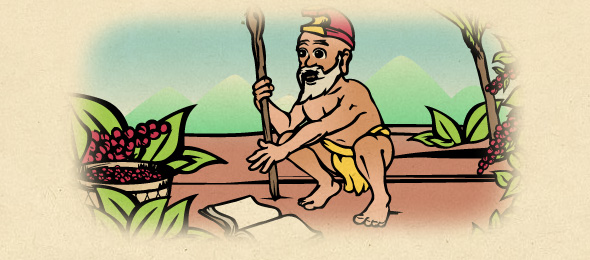The Mystery of the Menehune
What’s a Menehune? Most people answer that they are Leprechauns or that cute guy on the water bottle. Wrong! People are missing out. Menehune are much more interesting than what one finds on water bottles or names of sports teams, as I am sure that Leprechauns are more interesting than the information found on cereal boxes. Tales of little people in Hawaii are as rich as those on that other island (i.e., Ireland). But old written sources for Menehune are not as prolific as those of Leprechauns.
Before the arrival of foreigners, Hawaii had no bibliographic system. History, customs, legends (moolelo), and myths were past down and disseminated orally. So what is written down about Menehune is picked up at the time of the introduction of writing by foreigners. The earliest written reference to the Menehune is dated 1885 and it is stored at the Bishop Museum according to Katherine Luomala. She did not identify them as written by foreigner or Hawaiian.
Who exactly are the Menehune?
They are a pygmy people who lived or as some say, currently live in Hawaii. They are the stuff of legends, myth, and censuses (I will tell you more later). Most of the Menehune lived on Kauai. They are described in written sources as 2-4 feet tall and very strong. They are described as having a face with large eyes and an unpleasant look that may inspire fear.
I’m going to tell you a Menehune tale. I’ve rehashed, added embellishments, and abbreviated it a bit (i.e., I regurgitated it) as what might happen when things are disseminated orally. A mother probably told this tale to her child whom she thought needed a lesson on laziness.
Moemoe lay himself down on the soft ground. Then he began to dream of fishing knee deep with his dad. While he lay sleeping a heavy rain made the gurgling stream rise over his feet. The water rose until only his head was above the water.
Mother and father worried about their son in the forest. He should have been back. “What a silly boy to stay out in the rain,” mother said to her husband. Her husband replied, “He’s probably fallen asleep again. I’d better go get him.” Father set out to find his son. He looked up in the branches and down under the ferns but could not find him. He thought of his son, “What can I do to turn his lazy ways around. Soon he will be as tall as I. He must help us with our work.”
As father thought with concern about his son, he suddenly remembered the industrious and strong little men of Hawaii. He remembered the tales of the Menehune who created marvelous feats at night while working under a full moon. He decided to climb to the steepest parts of the mountain.
Moemoe’s father had Menehune blood flowing in his veins; therefore he could summon their help. It was early afternoon and there was still time to find the Menehune Chief. Moemoe’s father had visited the Menehune Chief as a little boy. The trail was steep, like climbing the Stairway to Heaven. When the trail was level, it became bordered by bush and stones. It led to the entrance of a cave fitted with a small stone door.
Moemoe’s father knocked three times. The stone door slowly rolled open. Small lights of fire lighted the interior. The Menehune Chief stepped out of the glow of the cave, his long white beard and long white robe, that was knotted on his left shoulder, were illuminated by the sun.
“I’m so happy to see you again;” the chief said. “Me too!” said Moemoe’s father. The chief waved him into his dwelling. “com, come, it’s startin to drizzle again.”
“I need your help chief. It’s about my boy.” The chief said, “Oh, so he has trouble working?” “Yes, yes, you know,” replied the father. “I’ve seen him sleeping,” said the chief. Moemoe’s father explained, “I must have him work at least an honest work-day. Soon I must repair our house, which is growing old with a sagging roof. Moemoe fell asleep while holding the roofing material for me.” The Menehune Chief and Moemoe’s father discussed the situation. The Menehune Chief had the solution. Moemoe’s father was so happy that the chief would help his son see that his lazy ways was no good at all. The chief said, “Just pay my Menehune with food.”
